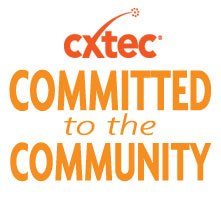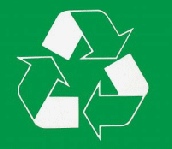Optimizing Computers for Performance: PC Tune Up
While there isn’t anyway to fully cover how to optimize a computer for peak performance, we will attempt to discover the basics that are far too often overlooked. In this article we will discuss software tweaking and hardware upgrade recommendations. This article is written with the attempt to be a general guide to address multiple platforms of Microsoft Windows, however the hardware recommendations may be effective for any operating system or PC. Before doing any maintenance to a computer, be sure there is a working backup of all important files, etc.
Let’s begin with software. When a computer is not running smoothly, slowing down, and acting sluggish, there are a few things that come mind.
• Has the hard drive been defragmented lately?
• Has the hard drive been scanned for errors recently?
• Are the Start-up files are crammed with junk that really doesn’t need to be loading?
• Are temporary or unneeded files lurking in the background?
• Are virus and spyware scanners up-to-date and running?
Defragmentation:
Defragging the hard drive is a very simple process. Windows has it’s own tool that does this that can be found under the start menu, programs/accessories/system tools menu. A hard drive after accessing a file puts it back, however it may not get back to the same place on the platter that which it came. So in time, data can technically be spread across the drives platter making data retrieval take longer, hence causing fragmentation. The defrag tool, moves the data back to its home where it belongs. A hard drive should be defragmented at least once a month or more often depending on how often data is accessed, files installed or uninstalled, or if you use the system as a gaming, video editing, sound editing machine. In other words it depends on how hard you use the computer as to how often one should defrag the hard drive.
Just as important as defragmentation, is scanning the hard drive for errors. More often than not, errors that slow down a computer’s performance are file structure and operating system related errors. Depending on the version of Windows you have will be the difference of the program being called Scan disk or Check Disk. Both can be found easily if you open the “My Computer” or “Computer” window (Icon on the desktop or in the start menu) and then right click on the hard disk drive (Default is C: however can vary from system to system), click properties. A dialog box will appear and one of the tabs at the top will say “Tools.” You want to click that. You will see here that there are a few choices to pick from. You already know what Defragmentation is, you want to click on “error checking check now” button. If you are given the option of checking the options of “Automatically Fix File System Errors & Scan for and attempt recovery of bad sectors,” be sure to check them. After pressing start, you may be prompted that the computer needs to start at Windows startup. You can say ok to this and restart the computer to let it scan, otherwise it will begin. It is recommend to leave the computer alone while it is scanning. If you have any programs open, it is recommended to shut them down before beginning the process.
Startup and Temporary Files:
Windows 98 to Windows Vista all have a disk cleanup tool found under in the start menu under programs/accessories/system tools/ and disk cleanup icon. Press the okay button after it calculates the files to be erased. Start-up files can be a bit tricky to remove, and we only recommend that you do the following if you consider yourself to more on the advanced side of computing. You will need a program called “HiJackThis” which can be downloaded over at Trendmicro.com. This program will show you all the files that start up with your computer. Be warned however, that if you remove system needed files, you may crash the operating system. We recommend that you do a system restore point before using this program. Other safer methods of removing the start up files are by removing them from the start-up menu under the start button menu.
Virus & Spyware:
These little pests are very annoying and will bring any computer to a crawl. We are not going to say much here because there are so many forms of virus’ and spyware out there that it would be impossible to cover some or all of them. So we simply will just round up the whole thing with an easy button. If you would rather automate disk defragmentation, scan disk, temporary file removal, registry cleaning, and all the other PC performance options we recommend downloading Avast .
• Anti-virus
• Anti-spyware
• E-mail scanning
• Anti-phishing
• Rootkit protection
• Identity protection
• Website authentication
• Network monitoring
• Firewall protection
• Automatic updates
• Embedded support
• Optional anti-spam and parental control
We know this article is long, however, keeping a PC running smoothly isn’t exactly a simple task. The next section is hardware based. All the above is the general software applications that can be done. A computer in time gets old and outdated, however doesn’t mean it needs to be on it’s way out the door. Here is a list of considerations when thinking about adding performance to your computer and quite possibly get a few more years of use out of it.
• Memory
• Hard Drive
• Video Card
• CPU
Memory:
Many entry level computers these days don’t come with enough memory. With applications becoming more and more demanding, it is essential that you have enough. First find out how much your system can upgrade to and what kind of ram it has. Consult the computer’s user manual or manufacturer to determine this. Memory is cheap and very effective in giving a computer the much needed performance.
Hard Drive:
If your computers hard drive is more than 4 years old, you would greatly benefit from purchasing a new one and while your at it, get a larger capacity for file storage. Hard drives unfortunately do wear out and grow old. They are mechanical by nature and design, so like a car, they will eventually give up or begin to perform poorly. With mp3s, ipods, video, and other audio files becoming common, having a larger hard drive will serve well. Transferring data and your operating system can be done easily with Acronis True Image Home. With Acronis True Image Home you will be able to move your entire operating system along with all your data from a smaller hard drive to a larger hard drive without the need to reinstall, reconfigure any partitions or operating system. When purchasing a new hard drive we recommend SATA technology if your computer system is ready for it. As far as what hard drive brand, we recommend Seagate branded hard drives.
Video Card & CPU:
As with the memory, we have seen multiple lower priced PC’s coming without a video card installed. This is yet another very useful upgrade and will add a lot of performance to your system. Be sure to verify with the computer’s manufacturer what type of card you can put into the PC and limitations. Be considerate of the power supply when adding a new video card. They do draw on amps and wattage, so be sure you have adequate power and amperage. Upgrading doesn’t have to cost you an arm and a leg, it should be fun and exiting without putting a pain in the wallet. When upgrading a CPU (central processing unit) be it Intel or AMD based all the above applies the same as the video card as the CPU. Be sure to check all compatibilities and limitations. CPU’s are only as good as the memory and video card backing them up. If you have a great CPU, but a horrible video card and low ram, it will perform poorly because it is carrying their load instead of processing mainly data.







